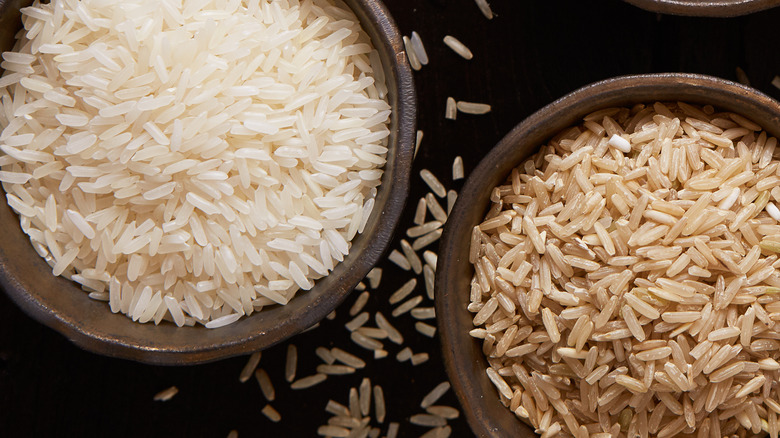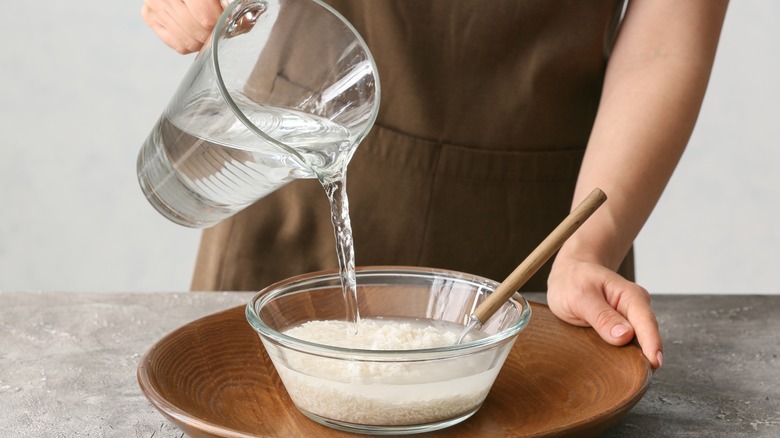The Reason You Shouldn't Cook White And Brown Rice The Same Way
You're in the kitchen, cooking brown rice to have as a side with meal-prepped chicken breast. Excited about the morsel of carbs you'll add to your new healthy meal plan, you take your first bite of steamed brown rice, expecting something sticky, tender, and moist. Instead, you get coarse, loose grains that require copious amounts of chewing before they painful make their way down your throat. So what went wrong?
If you're accustomed to cooking white rice, then you probably thought you could cook your brown rice using the same method. This is a rookie mistake that can ruin your entire dish. First, you must consider the differences between white and brown rice.
Brown rice contains the fibrous husk of the grain (called the bran and the germ), giving it a denser, heartier texture, while white rice has been processed removing these outer layers. White rice contains only the interior portion of the grain, which is softer, stickier, and starchier. Thus, to make brown rice taste just as good as white rice, there are some important adjustments you need to make to the cooking process.
Brown rice requires more water
Due to the bran and germ, brown rice needs a lot more water and a longer cooking time than white rice. Culinary scientist and rice expert Matt Slem at Lundberg Farms tells Eat This, Not That that white rice only requires a 1 to 1.15 ratio of rice-to-water, which would mean that there is a little more water than rice. Slem suggests that the perfect batch of brown rice requires a 1 to 2 rice-to-water ratio. This means that you would add two cups of water for every one cup of rice to your rice cooker or stovetop.
Whether you want to make sushi hand rolls or have a nutrient-dense salad bowl, the right rice-to-water ratio is essential to making the foundation of your dish shine. All types of rice can be great vehicles for sauces and sides if you pay attention to the proportions.

